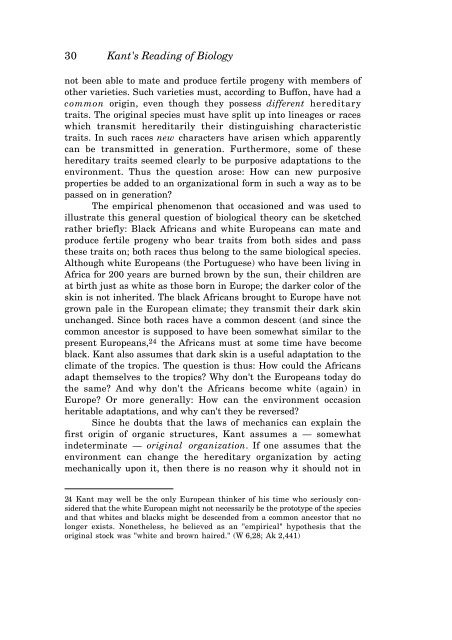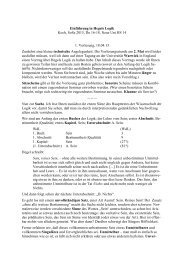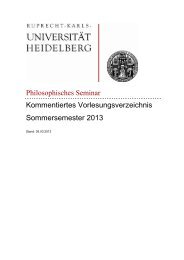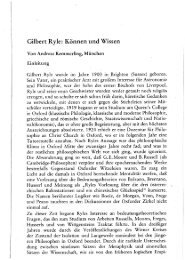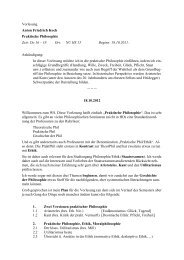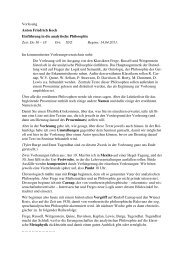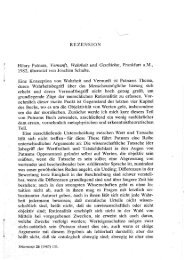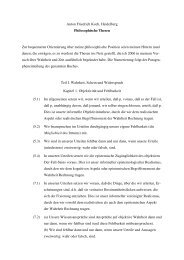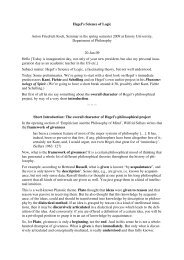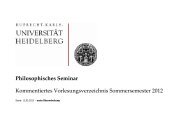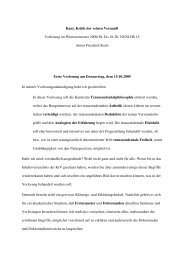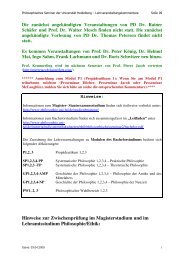KANT'S CRITIQUE OF TELEOLOGY IN BIOLOGICAL EXPLANATION
KANT'S CRITIQUE OF TELEOLOGY IN BIOLOGICAL EXPLANATION
KANT'S CRITIQUE OF TELEOLOGY IN BIOLOGICAL EXPLANATION
Create successful ePaper yourself
Turn your PDF publications into a flip-book with our unique Google optimized e-Paper software.
30 Kant's Reading of Biology<br />
not been able to mate and produce fertile progeny with members of<br />
other varieties. Such varieties must, according to Buffon, have had a<br />
common origin, even though they possess different hereditary<br />
traits. The original species must have split up into lineages or races<br />
which transmit hereditarily their distinguishing characteristic<br />
traits. In such races new characters have arisen which apparently<br />
can be transmitted in generation. Furthermore, some of these<br />
hereditary traits seemed clearly to be purposive adaptations to the<br />
environment. Thus the question arose: How can new purposive<br />
properties be added to an organizational form in such a way as to be<br />
passed on in generation?<br />
The empirical phenomenon that occasioned and was used to<br />
illustrate this general question of biological theory can be sketched<br />
rather briefly: Black Africans and white Europeans can mate and<br />
produce fertile progeny who bear traits from both sides and pass<br />
these traits on; both races thus belong to the same biological species.<br />
Although white Europeans (the Portuguese) who have been living in<br />
Africa for 200 years are burned brown by the sun, their children are<br />
at birth just as white as those born in Europe; the darker color of the<br />
skin is not inherited. The black Africans brought to Europe have not<br />
grown pale in the European climate; they transmit their dark skin<br />
unchanged. Since both races have a common descent (and since the<br />
common ancestor is supposed to have been somewhat similar to the<br />
present Europeans, 24 the Africans must at some time have become<br />
black. Kant also assumes that dark skin is a useful adaptation to the<br />
climate of the tropics. The question is thus: How could the Africans<br />
adapt themselves to the tropics? Why don't the Europeans today do<br />
the same? And why don't the Africans become white (again) in<br />
Europe? Or more generally: How can the environment occasion<br />
heritable adaptations, and why can't they be reversed?<br />
Since he doubts that the laws of mechanics can explain the<br />
first origin of organic structures, Kant assumes a — somewhat<br />
indeterminate — original organization. If one assumes that the<br />
environment can change the hereditary organization by acting<br />
mechanically upon it, then there is no reason why it should not in<br />
24 Kant may well be the only European thinker of his time who seriously considered<br />
that the white European might not necessarily be the prototype of the species<br />
and that whites and blacks might be descended from a common ancestor that no<br />
longer exists. Nonetheless, he believed as an "empirical" hypothesis that the<br />
original stock was "white and brown haired." (W 6,28; Ak 2,441)


